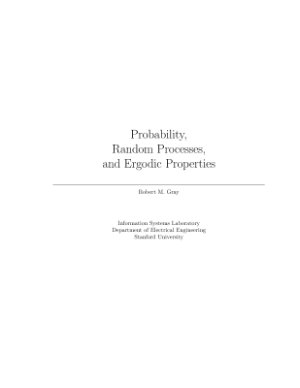Information Systems Laboratory Department of Electrical Engineering
Stanford University, 1987.- 216 pages
This book has been written for several reasons, not all of which are academic. This material was for many years the first half of a book in progress on information and ergodic theory. The intent was and is to provide a reasonably self-contained advanced treatment of measure theory, probability theory, and the theory of discrete time random processes with an emphasis on general alphabets and on ergodic and stationary properties of random processes that might be neither ergodic nor stationary. The intended audience was mathematically inclined engineering graduate students and visiting scholars who had not had formal courses in measure theoretic probability. Much of the material is familiar stuff for mathematicians, but many of the topics and results have not previously appeared in books.
This book has been written for several reasons, not all of which are academic. This material was for many years the first half of a book in progress on information and ergodic theory. The intent was and is to provide a reasonably self-contained advanced treatment of measure theory, probability theory, and the theory of discrete time random processes with an emphasis on general alphabets and on ergodic and stationary properties of random processes that might be neither ergodic nor stationary. The intended audience was mathematically inclined engineering graduate students and visiting scholars who had not had formal courses in measure theoretic probability. Much of the material is familiar stuff for mathematicians, but many of the topics and results have not previously appeared in books.

